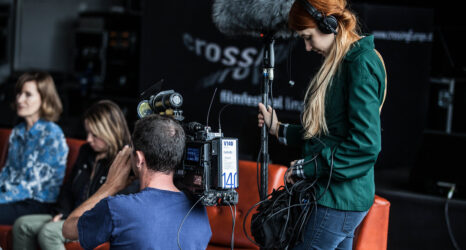New toys and merchandise are hitting the shelves in readiness for the first Wonder Woman movie to hit the big-screen. Star Wars fans are looking forward to a new animated miniseries “Forces of Destiny,” focused on female characters and accompanied by a new range of Hasbro “adventure figures.” Lego recently announced the release a set of mini figures to celebrate Women in NASA, and the winner of the Action Figure Toy of the Year Award at this year’s New York Toy Fair was Mattel’s DC Super Hero Girls.
It looks like girls are getting in on the action at last. Is social progress being reflected through the toy industry? Or is the emphasis on action “for girls” still a problem?
Traditionally minded people might think of dolls as girls toys and action figures as for boys, despite the fact that they are the same toy. The Oxford dictionary defines “action figure” as “a doll representing a character known for vigorous activity, such as a soldier or superhero.” Who decided Horse Riding Barbie doesn’t fit into that category?
Hasbro invented the action figure back in 1964 with the launch of G.I. Joe. They wanted to match the success of Mattel’s Barbie doll, launched five years earlier and aimed squarely at girls, but they wanted to differentiate G.I. Joe from a doll. So began the division of dolls into big muscled, aggressive characters, versus those focused on fashion and beauty.
Baby dolls aside, the toy industry tends to create figures that are rather more masculinized or feminized than real life. That’s created a lot of discussion around unrealistic body shape expectations for girls, and in recent years the increased hyper masculinization of male figure toys has been related to body image anxiety in boys.
There’s no official definition of the difference between action figures and dolls. It’s a matter of opinion—much of which recoils at the idea that action figures are actually dolls. “Every collector has been faced with someone who’s not in the know calling their action figures ‘figurines’, one collector writes, “or worse, ‘dolls.'”
Why do some people hate the idea of calling an action figure a doll? Could it be because they think boys are better than that? That dolls are below them, just as girls interests are below them? Doesn’t it boil down to sexism?
The spuriousness of the action figure/doll divide was highlighted when Lottie Doll was nominated for the 2017 Toy of the Year Awards—for both Doll of the Year, and Action Figure of the Year. The eventual winner in the action category was DC Super Hero Girls, a range lauded by many as a step forward, but it’s still designed with gender segregation in mind–marketed to girls, and sold in the fashion dolls category by retailers who call toys in the likeness of Batman and other male superheroes “action figures.”
The divide remains: boys and girls, action figures and dolls. No doubt many will see toys such as the women in NASA Lego set as being “for girls”—because rather than include all children in marketing, the industry continues to segregate without recognition that children’s interests overlap and can’t be neatly segregated into boy or girl.
Many people now think it’s fine for boys to play with dolls and girls to like action figures—but shouldn’t they all come under the broad category of doll? Language matters, and a change in marketing could make a big difference.
The UK’s Let Toys Be Toys campaign has helped change the way toys are marketed. Their recent research found that gender markers have almost disappeared from British high streets and are becoming less common on websites. But gendered targeting remains—pink and blue, “Lego Friends’ segregated from the rest of the Lego and Action Figures in a different aisle than dolls.
Imagine one toy aisle that encompassed all types of doll, with no indication that those types were gender targeted. No pink-and-fluffy vs. dark-and-angry divide. More variety, color and choice.
It could mean boys don’t feel embarrassed to explore more of the doll aisle, or spark the interest of girls who weren’t previously interested in superheroes. The extreme body shapes would be thrown into focus, which might lead to a more sensible approach. And it could make scenarios where female figures get left out of merchandise—such as the dearth of Black Widow figures among Avengers toys—less likely.
The main difference between dolls and action figures is that one overwhelmingly targets girls while the other mainly targets boys. It’s a marketing strategy built on the idea that boys and girls are expected to play differently, an arbitrary division that supports a culture in which gender inequality flourishes.
Just like sparkly STEM toys aimed just at girls, action toys for girls are a sideways step that still says girls and boys are fundamentally different. Real progress would see the end of gendered toy marketing and distribution altogether.





